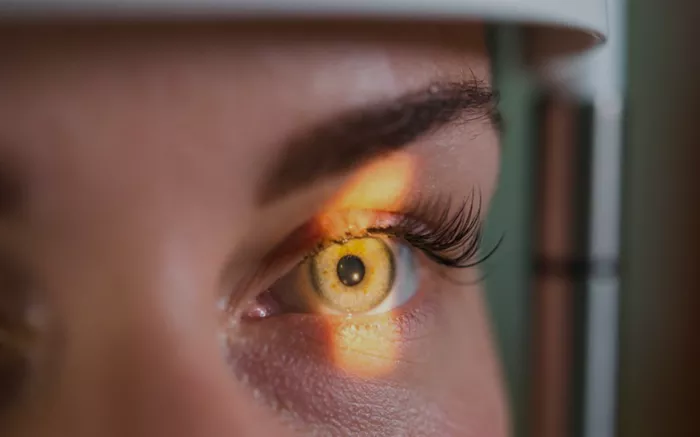Retinal cryotherapy is a treatment used to fix problems in the retina. The retina is a thin layer of tissue at the back of your eye. It helps you see by sending signals to your brain.
In some cases, the retina can have tears or other damage. If these are not treated, they may cause serious vision problems, like retinal detachment. Retinal cryotherapy uses extreme cold to seal the damaged area. This helps prevent the tear from getting worse.
Doctors use a special tool that gets very cold. This tool is placed on the outside of the eye, near the damaged part of the retina. The cold creates a scar that seals the area.
Why Is Cryotherapy Used on the Retina?
There are a few reasons why a doctor might recommend retinal cryotherapy:
- Retinal tears
- Holes in the retina
- Retinal detachment (in some early cases)
- Retinopathy of prematurity (in infants)
- Tumors in the retina (such as retinoblastoma)
Cryotherapy is often used when laser treatment cannot reach the damaged area or when the damage is too severe for other options.
What Happens During the Procedure?
Retinal cryotherapy is usually done in a clinic or outpatient surgery center. It does not require a long hospital stay.
Here is what typically happens:
- You will be given local anesthesia to numb the eye.
- The doctor uses a small freezing probe.
- The probe is placed on the outside of your eye.
- The cold from the probe reaches the retina and creates a small scar.
- The scar helps keep the retina in place.
The whole procedure usually takes 30 to 60 minutes. You might feel some pressure but should not feel pain during the treatment.
Immediate Effects After the Procedure
After retinal cryotherapy, you may notice several effects:
- Blurred vision
- Eye redness
- Swelling around the eye
- A scratchy or irritated feeling
- Light sensitivity
- Tearing
These symptoms are normal and usually last a few days. Your doctor will give you instructions on how to care for your eye and what to avoid.
Recovery Time: What to Expect
Healing from retinal cryotherapy varies from person to person. However, most people can expect the following timeline:
First 24-48 Hours:
- Mild to moderate discomfort
- Blurred vision
- Eye may appear red or swollen
- Rest is important
Your doctor may give you eye drops or medication to reduce swelling and prevent infection. You should avoid touching or rubbing your eye.
First Week:
- Vision may still be blurry
- Eye discomfort usually improves
- Most daily activities can be resumed gradually
It is important to avoid heavy lifting, bending, or strenuous exercise. These activities can increase pressure in your eye and affect healing.
2 to 4 Weeks:
- Vision becomes clearer
- Eye should feel normal again
- Scar tissue begins to form fully on the retina
You will need to visit your doctor to check how your eye is healing. They will examine the retina and make sure the treatment worked.
After One Month:
- Most people return to normal activities
- Full healing of the retina may take longer
- Follow-up visits help monitor your recovery
In some cases, your vision might not return to exactly how it was before. This depends on how much damage there was before the procedure.
When to Call Your Doctor
Sometimes, problems can happen after cryotherapy. You should call your doctor if you notice:
- Severe pain that does not go away
- Sudden loss of vision
- Large increase in floaters (small spots in your vision)
- Flashes of light
- Yellow or green discharge from the eye
- Fever or chills
These may be signs of infection, retinal detachment, or other serious problems. Early treatment can prevent further damage.
Tips for a Smooth Recovery
Here are some helpful tips to make your recovery easier:
- Follow your doctor’s instructions carefully
- Use all prescribed eye drops as directed
- Avoid rubbing or pressing on the eye
- Wear sunglasses if your eyes are sensitive to light
- Rest your eyes when they feel tired
- Attend all follow-up appointments
Your doctor may also suggest wearing an eye shield at night to prevent accidental injury while sleeping.
Can You Drive After Retinal Cryotherapy?
Most people should not drive immediately after the procedure. Your vision may be blurry, and your eye might be sensitive to light. Wait until your doctor says it is safe to drive. This may take a few days or longer, depending on your healing.
Work and Daily Life After Treatment
You may be able to return to work within a few days, especially if your job does not require physical labor or sharp vision. However, if your work involves heavy lifting or detailed visual tasks, you may need more time off.
Talk to your doctor about when it is safe to go back to work. Every patient is different, and healing depends on your specific case.
Long-Term Care After Cryotherapy
Even after your eye feels better, it’s important to continue regular eye exams. Retinal tears can come back, or new ones can form. Keeping up with your eye care helps protect your vision.
If you have other eye conditions, like diabetes or high blood pressure, controlling these can also help prevent future retinal problems.
Final Thoughts
Retinal cryotherapy is a useful treatment for repairing tears and other problems in the retina. While recovery takes time, most people heal well and can return to their normal lives within a few weeks.
The key to a smooth recovery is following your doctor’s advice, taking care of your eyes, and watching for any signs of trouble. If you do that, you have a good chance of protecting your sight for years to come.
Related topics:
Tractional Retinal Detachment Surgery: Treatment & Recovery
Pneumatic Retinopexy: A Minimally Invasive Retinal Detachment Fix
Retinal Bleeding Surgery: What to Expect and Recovery Tips


